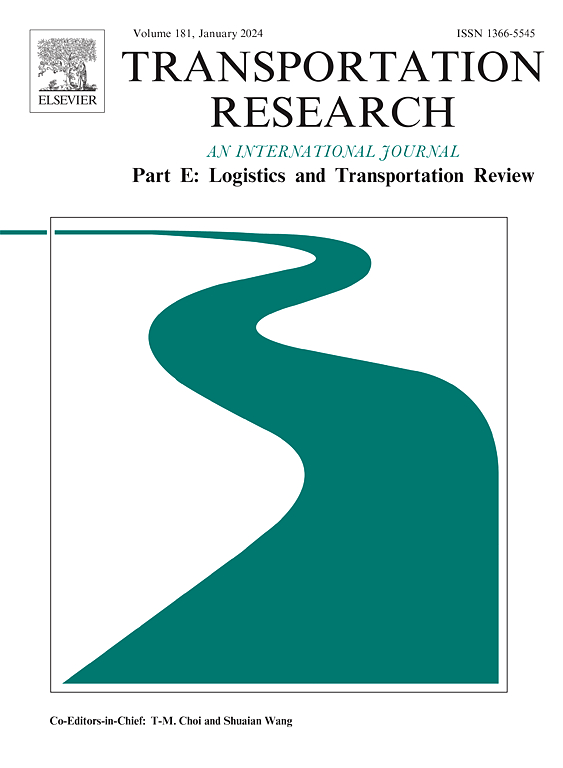Modeling and analysis of the platoon size of Connected Autonomous Vehicles in a mixed traffic environment
IF 8.3
1区 工程技术
Q1 ECONOMICS
Transportation Research Part E-Logistics and Transportation Review
Pub Date : 2025-04-26
DOI:10.1016/j.tre.2025.104130
引用次数: 0
Abstract
In a mixed traffic environment that consists of both Connected Autonomous Vehicles (CAVs) and Human-driven Vehicles (HVs), the platoon sizes of CAVs play a significant role in traffic flow analysis. However, the statistical properties of these platoon sizes have not been thoroughly addressed in existing research. This study aims to fill this critical gap by modeling CAV platoon sizes as a random variable, analyzing scenarios both with and without a Maximum Platoon Size (MPS) constraint. Specifically, the frequencies and corresponding probability distributions of CAV platoon sizes under these conditions are derived. Furthermore, the distribution derivations are extended by incorporating platooning willingness. Through numerical analysis, the results reveal that the proposed probability distributions align closely with numerical observations, demonstrating the consistency and reliability of the model. The study also explores the characteristics of these distributions, as well as the effects of the MPS constraint and platooning willingness. By examining the platooning behaviors in mixed traffic and providing analytical derivations for CAV platoon size probability distributions, this research lays a robust mathematical foundation for further analysis of mixed traffic dynamics, enhancing traffic management and efficiency in increasingly automated traffic environments.
混合交通环境中互联自动驾驶车辆排规模的建模与分析
在由联网自动驾驶汽车(cav)和人类驾驶汽车(hv)组成的混合交通环境中,自动驾驶汽车的队列大小在交通流分析中起着重要作用。然而,在现有的研究中,这些排大小的统计特性并没有得到彻底的解决。本研究旨在填补这一关键空白,通过将CAV排大小建模为随机变量,分析有和没有最大排大小(MPS)约束的情况。具体地说,导出了在这些条件下CAV队伍规模的频率和相应的概率分布。在此基础上,通过引入排队意愿对分配推导进行了扩展。数值分析结果表明,所提出的概率分布与数值观测值吻合较好,证明了模型的一致性和可靠性。研究还探讨了这些分布的特征,以及MPS约束和排队意愿的影响。通过研究混合交通中的排队行为,并提供CAV队列大小概率分布的解析推导,本研究为进一步分析混合交通动力学,提高日益自动化的交通环境中的交通管理和效率奠定了坚实的数学基础。
本文章由计算机程序翻译,如有差异,请以英文原文为准。
求助全文
约1分钟内获得全文
求助全文
来源期刊
CiteScore
16.20
自引率
16.00%
发文量
285
审稿时长
62 days
期刊介绍:
Transportation Research Part E: Logistics and Transportation Review is a reputable journal that publishes high-quality articles covering a wide range of topics in the field of logistics and transportation research. The journal welcomes submissions on various subjects, including transport economics, transport infrastructure and investment appraisal, evaluation of public policies related to transportation, empirical and analytical studies of logistics management practices and performance, logistics and operations models, and logistics and supply chain management.
Part E aims to provide informative and well-researched articles that contribute to the understanding and advancement of the field. The content of the journal is complementary to other prestigious journals in transportation research, such as Transportation Research Part A: Policy and Practice, Part B: Methodological, Part C: Emerging Technologies, Part D: Transport and Environment, and Part F: Traffic Psychology and Behaviour. Together, these journals form a comprehensive and cohesive reference for current research in transportation science.

 求助内容:
求助内容: 应助结果提醒方式:
应助结果提醒方式:


